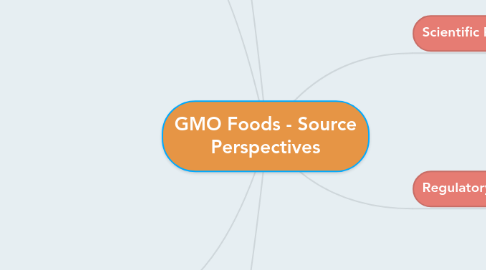
1. Labeling Article
1.1. There has been big debate and even motions in Congress about labeling GMOs as modified
1.2. Some debatable points are the fact that many of the GMOs are modeled to be resistant to herbicides which worry people whereas other modifications do not.
1.3. New technologies may find a loophole in the Government’s definition of a GMO and allow for essentially no regulation due to technicality.
1.4. Many companies propose smart labels -- a solution that would put much more knowledge at consumer fingertips.
2. Biggest Concerns Article
2.1. There is much concern but many of the concerns about GMOs are not about GMOs
2.2. A concern is that GMOs introduce more pesticides:
2.2.1. Herbicide tolerant plants (roundup ready) can increase the amount of chemicals, but they are less toxic in general
2.2.2. Plants that produce their own insecticide are much more safe and feasible, protecting the environment and keeping us safe.
2.3. A concern is that messing with DNA can have dangerous consequences
2.3.1. We have been genetically modifying organisms for thousands of years in breeding
2.3.2. There is a lot of testing to ensure everything is safe including:
2.3.2.1. Hybrids
2.3.2.2. Mutation breeding (using radiation and then breeding changes in genes)
2.3.2.3. Backcross Breeding (a more involved hybriding process)
2.4. A concern is that Corporations would be owning all GMOs
2.4.1. The concept of monopoly in agriculture is very bad, but unrelated to the Science of GMOs being dangerous
2.4.2. Corporations that support the economy would do better while consumers get cheaper foods
2.5. GMOs can really be a force of good for the World, and more people would agree with them if the concerns were addressed through education.
3. Scientific America Article
3.1. Though many scientists believe that criticism of GMOs is unfounded, some still have concerns
3.2. GMOs have lowered food prices and increased amount of food, helping starving people
3.3. India, China, and European nations are more wary of GMOs than the United States
3.4. When GMOs were first developed there was a massive public outcry to make sure they were kept safe and regulated.
3.5. GM crops have since proven to be safe, essentially medically non-risky
3.6. We have been modifying genetics for thousands of years and this recent influx of GMOs just makes the science more precise and safe.
3.7. Some Scientists are worried about one gene changing the whole organism
3.7.1. Though the impacts may be more subtle and far reaching overall they have proven safe
3.8. A compromise forward is to continue having GMOs, but also enacting stricter testing measures
4. Time Magazine Article
4.1. A New report claims through almost 1000 studies that GMOs are probably safe in humans.
4.2. Mandatory labelling may be pushed for politically however the study suggests that they are not needed
4.3. The study maintains that researching agriculture is complicated and multifaceted.
4.4. There are still some concerns with Herbicides resistant crops, such as Monsanto corn.
5. Scientific Panel Results
5.1. There is “reasonable evidence that animals were not harmed by eating food derived from GE crops,” quotes the report citing both cancer and other health related issues in the food supply.
5.2. In regards to pesticides there are two concerns addressed:
5.2.1. Bt Resistant plants do not have a concerning impact given the safety measures farmers take (refuge patches, farm plot design)
5.2.2. Glyphosate resistant plants do show some concerns with resistant weeds and plant dependence after use.
6. Regulatory Concerns
6.1. The USDA has allowed two GMO crops to be exempt from review
6.1.1. Critics argue there could be large unforeseen risks

